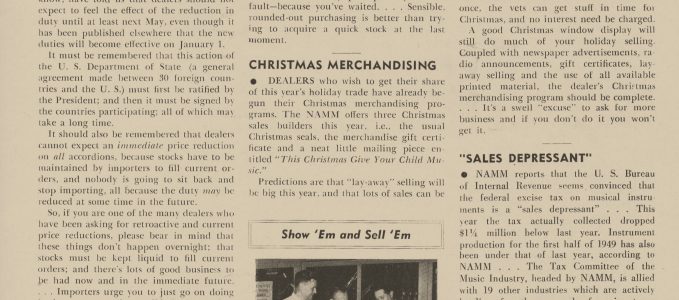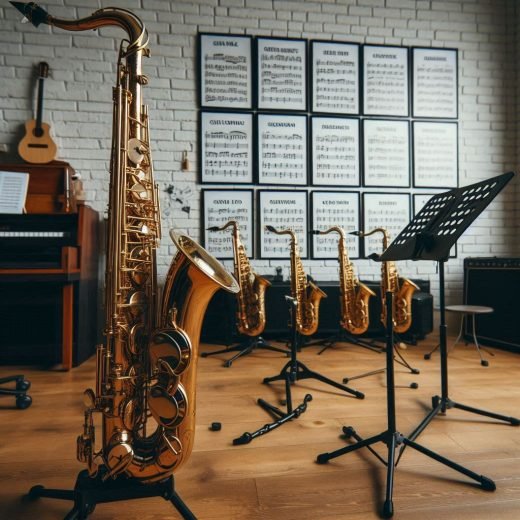A number of months ago I started a new series featuring vintage gear ads. I had scanned these from vintage trade rags that I had received from my friend and musical colleague, Jack. A few days ago I realized that my efforts to develop this series further had stalled, so I dug into my scanned images and decided that my next entry in the series would centre around saxophones and their accessories. Enjoy…
Vintage saxophones
Hamilton saxophones
Hamilton was a stencil saxophone produced for whom I can only presume was the Baldwin piano company, since according to the Antique Piano Shop:
The Hamilton Piano Company was originally established as “The Hamilton Organ Company” by D. H. Baldwin in 1888….
“Hamilton” has always been known for being a well made, durable piano of good quality, and was marketed to be a more affordable alternative to the costlier Baldwin line…. Today, the Baldwin and Hamilton names are owned by the Gibson Guitar Company of Nashville, Tennessee.
Not sure which company produced this model of alto saxophone, but in the past Conn has been identified as a manufacturer of Hamilton saxophones. This alto however, doesn’t say “Conn” to me. It looks more like a Buescher.

Holton 234
I know there are those of you out there who love their Holtons, so for you, I offer this piece of saxophone nostalgia. The Holton 234 Sky Rider. Doesn’t this sound like it should be performing at an airshow near you. 😉 😆
Brian at Get A Sax has a lovely example of a Holton 234 in his gallery of sold horns. Interestingly enough, it is engraved Stratodyne, not Sky Rider. Not sure what was going on at Holton back then, but they seemed to love their references to aircraft.
Based on the serial # chart for Holton saxes on Saxophone.org, it would appear that this ad was run 8 years before the company ceased production of saxophones.
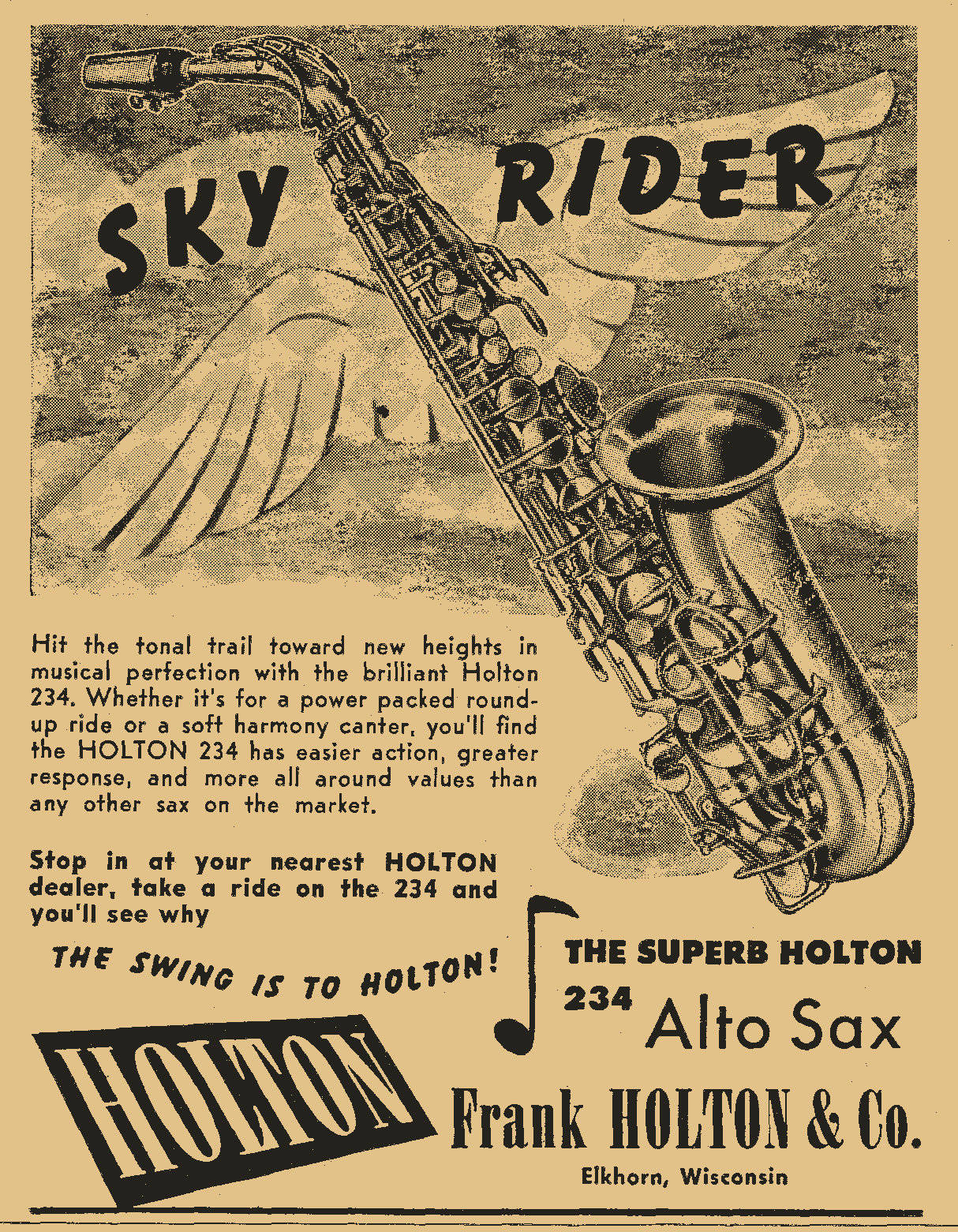
Buffet 1990
Buffet must have been pretty sure about their 1990 saxophone. Too bad that Selmer had their SBA and the Mark VI in the wings. 😉
Not sure what happened to the “1990” model name, but this is the more commonly referred to as the Dynaction. Pete wrote about it back when he owned Saxpics.
Of course we know now that the Dynaction’s production only lasted about 7 years. The Super Dynaction came out in 1958, presumably as a response to Selmer’s evolution.
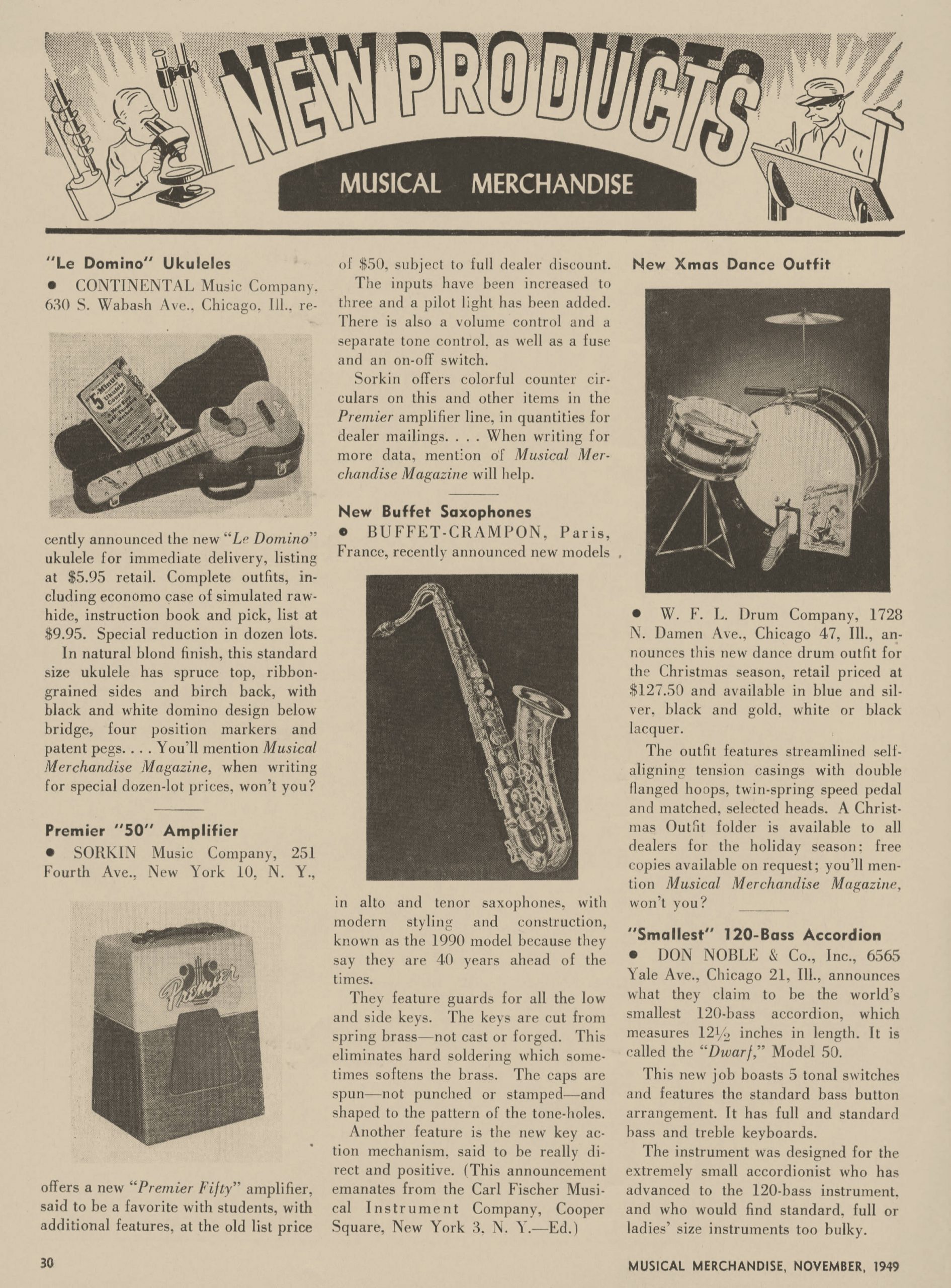
Selmer Super-Action sax: 1
Speaking of Selmer, their Super-Action could be had in December 1950 for a $65 savings. (A $677.23 US savings in Dec. 2020, according to the US government’s inflation calculator!)
But what exactly is the Super-Action you ask? Today it is more commonly referred to as the Super Balanced Action. Why? Well according to saxophone.org:
Originally called the Super Action [sic] model, it is now known as the Super Balanced Action (SBA) to differentiate it from the newer Super Action 80 model that came much later.
According to most saxophone specialists, this was the first truly modern Selmer, since it had offset tone holes. It was the really the horn that set the stage for the changes that would come in the Mark VI, and all other saxophones that would come after it.

Selmer Super-Action: 2
Here is another Super [Balanced] Action ad from Selmer. This one comes to us from the February 24, 1950 edition of Down Beat.
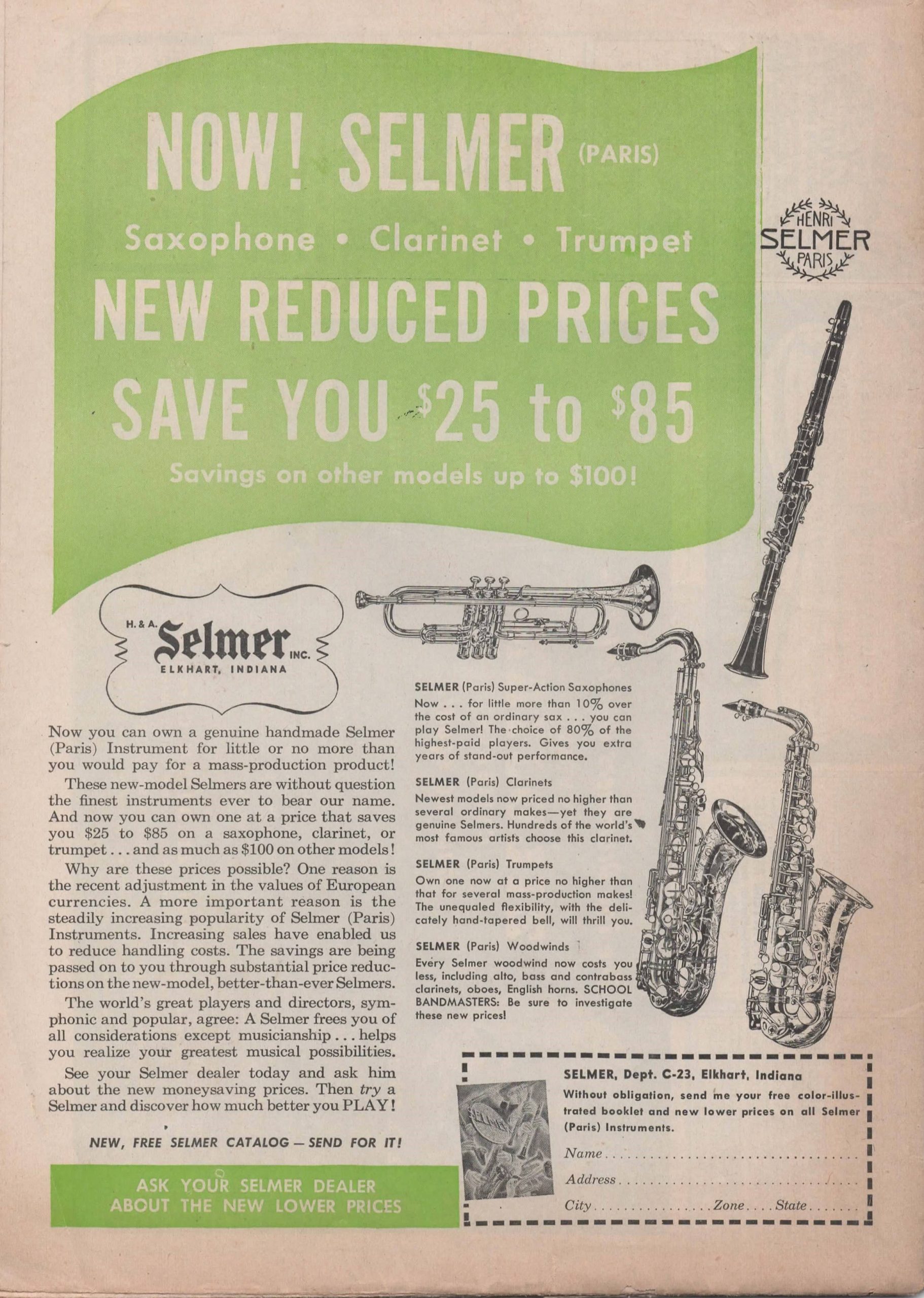
Bass saxes making a comeback. In 1949?
Well according to this industry rag for music stores, bass saxophones were in demand in late 1949. Mmm… I wonder by who? Who were these “top line bands” that were ordering them?
Maybe my bass saxophone buddy Paul Lindemeyer could chime in here. I can’t think of anyone who has done more work recently researching these oddities of the low sax end than him.
Paul, care to chime in with your research here? What was this 1949 bass saxophone revival of which they speak?
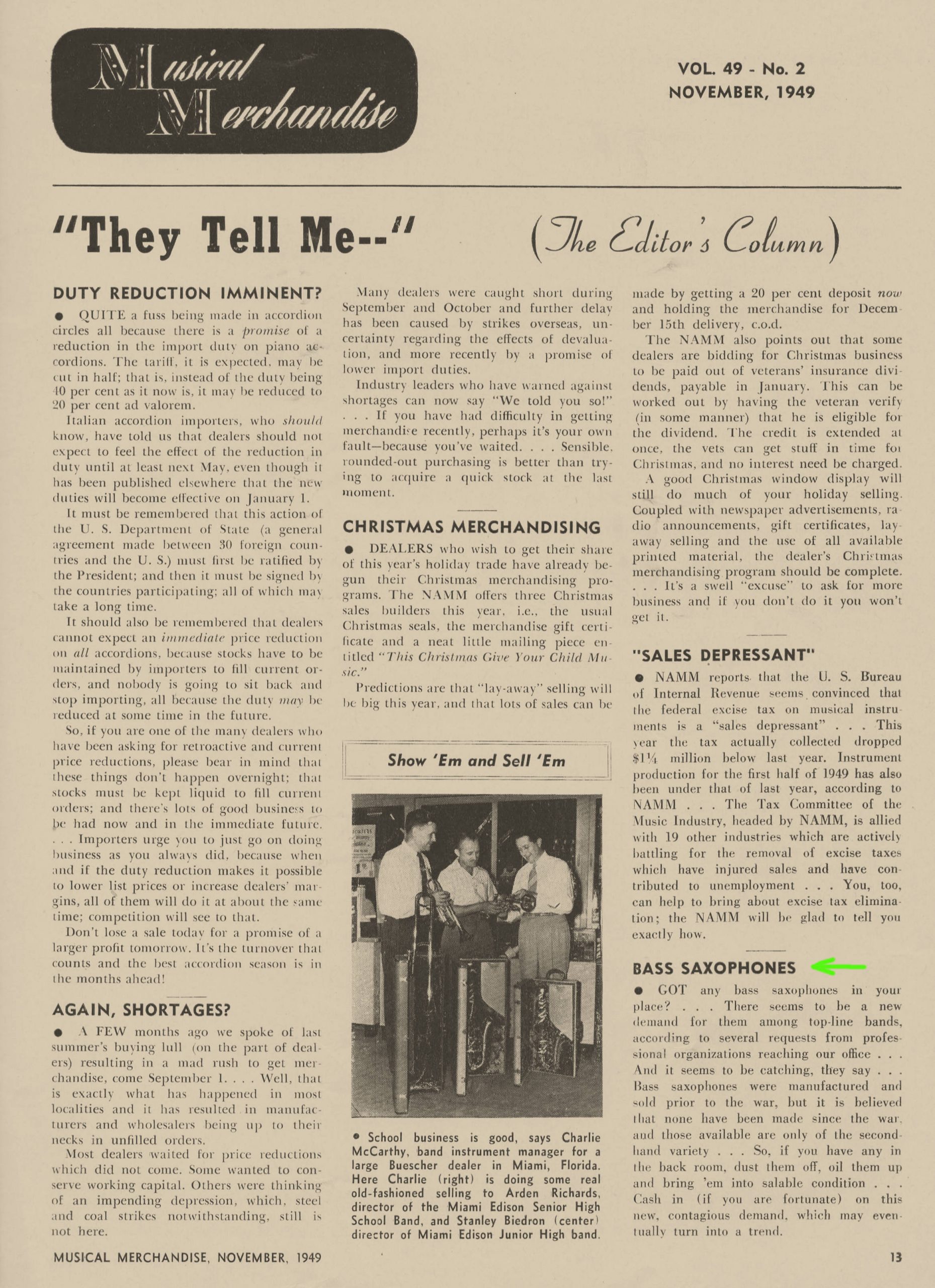
Vintage saxophone accessories
Selmer brand accessories
If you go into an authorised Selmer store today and purchase genuine Selmer accessories for your Selmer Paris horn, they do not come cheap. Even in 1950 these things did not come cheap. Selmer Paris is not now, nor was it ever, a budget brand.
Check out the inflation calculator again to see what the prices of these items were in February 1950. In today’s dollars the neck straps were both over $15.00. Interestingly enough, people selling used (uck 😛 ) Selmer neck straps are routinely asking more than the original prices—when adjusted for inflation.
Then of course there is the Magni-Tone ligature. (More below.) It was priced for a buck in 1950, which in today’s money is $11.08.
I don’t know about you, but I have tried one. They’re not that great. However, that doesn’t stop people from trying to cash in on the Selmer name, and routinely asking north of $100. WTF? Really? Oh, well, it’s “Selmer” after all. Sigh…

Selmer Magni-Tone ligature
I wrote an article about these in 2013. If you would like to know more about these ligs, check it out. I have a link to the patent, as well as the patent drawing in there for your viewing pleasure.
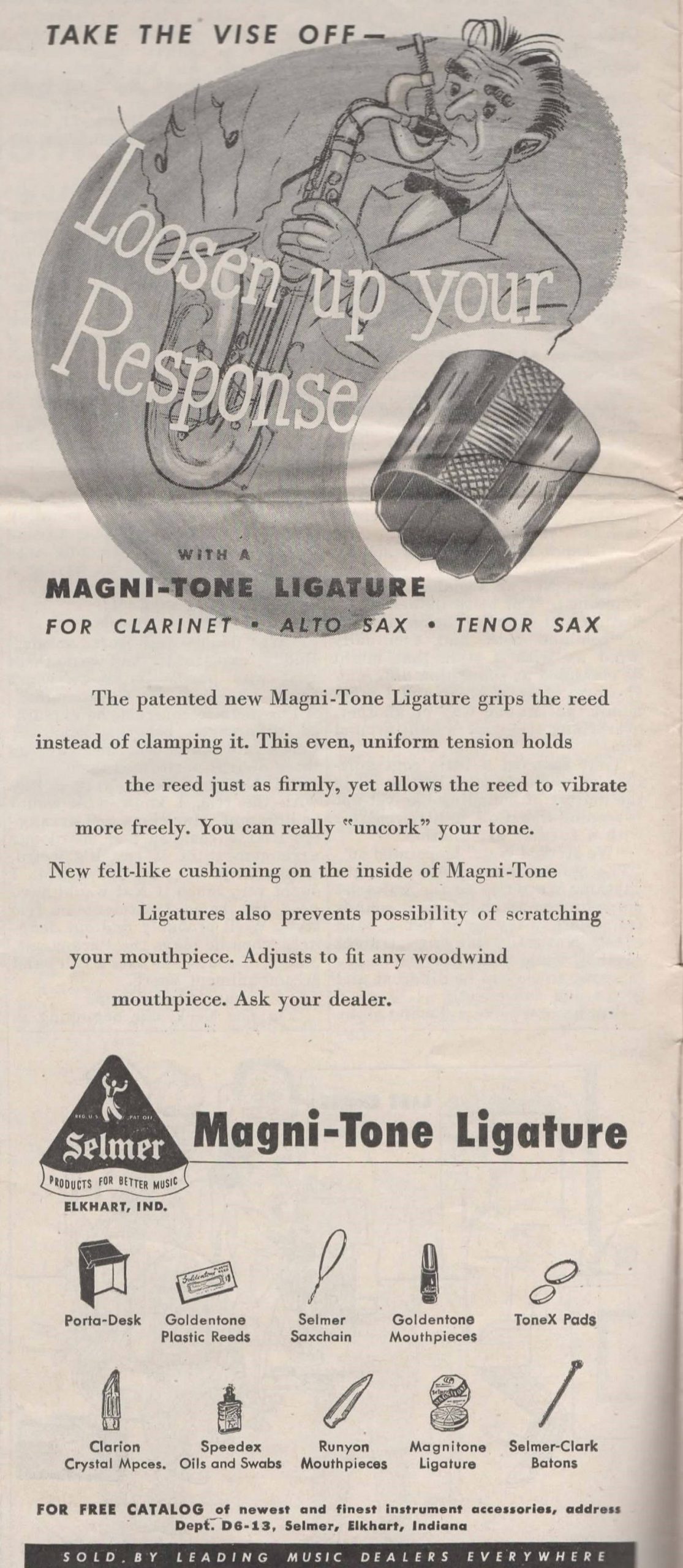
The original Reedguard
When I saw this ad from the November, 1949 edition of Musical Merchandise, I was completely blown away. I had no idea that the original Reedguard had been introduced that long ago.
I can’t remember exactly when I got mine, but they are branded Lavoz Reedguard. I would have likely bought them in the early 80s. I have 4 or so in total.
I had no idea that they were originally created by the Maier firm. Presumably Maier must have sold to Lavoz, who eventually ended up under Rico, who eventually ended up under D’Addario.
Today the Rico and D’Addario Reedguards are just a shadow of their former selves. This is likely why Lavoz reeds guards demand a high price on auction sites,
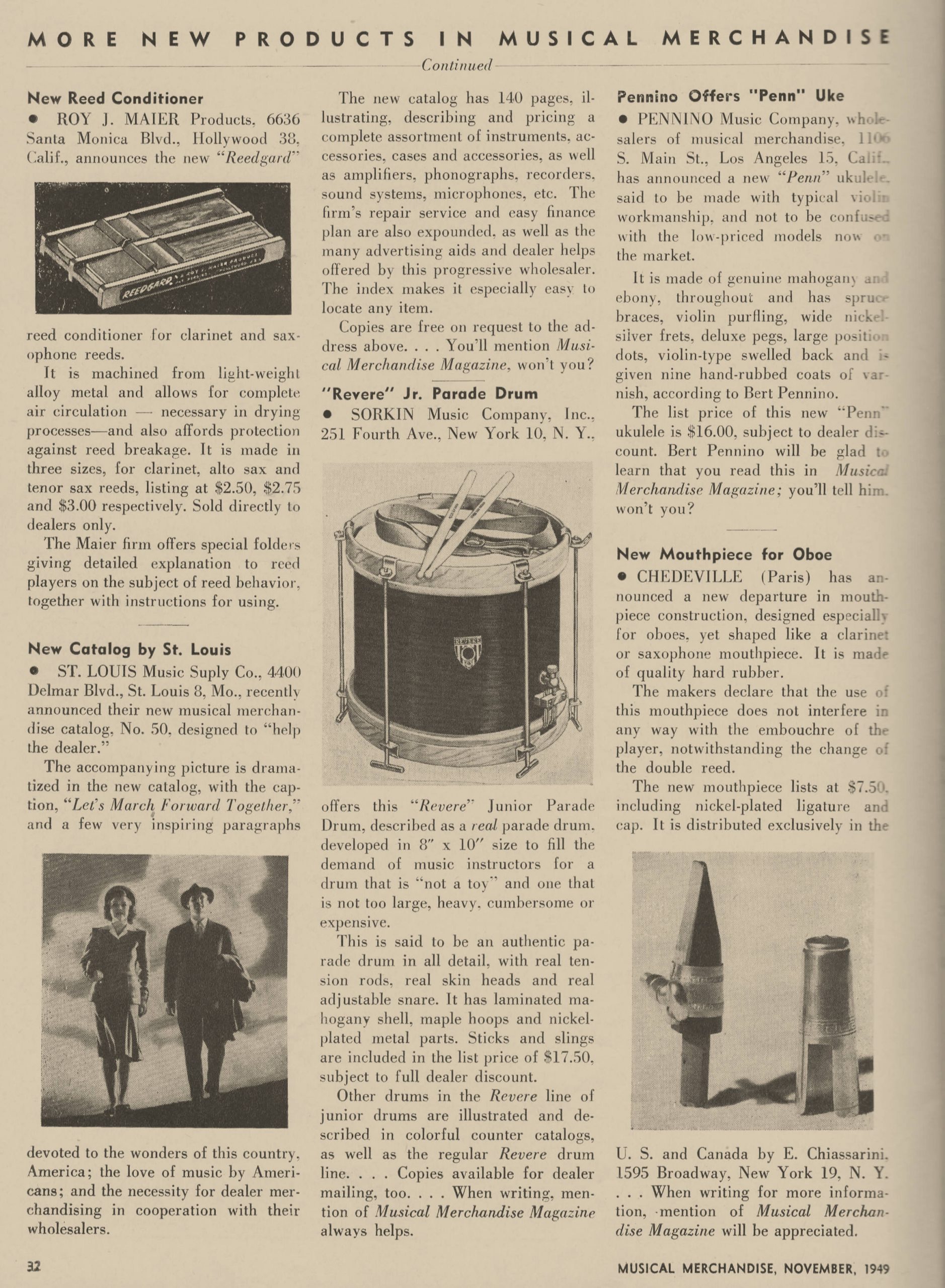
These Maier Reedguards were patened. They held US patent #: US2604978A. But that’s a post for another day. 😉


